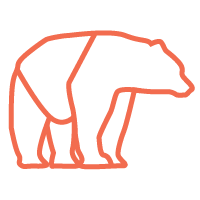Before DuPont transformed our relationship with plastic and fast fashion exploded in the 60s, it was not uncommon for materials, clothes and gear to survive decades, even millennia! People cared for their clothes and bought less because they were made from the earth, made with care and made to last.
For thousands of years, clothing and equipment have been the first line of defence to combat the harsh elements. Protection was a necessity to survive a life that for many, was dominated by physical outdoor labour (sedentary jobs are a new concept in human history with the arrival of automation and technology). At the beginning of the 19th Century for example, over 80% of the global population lived in extreme poverty. For many people, clothing was not a fashion statement and communities would often mend, upcycle, and break down items to re-use and create new products.
The irony of a circular fashion model is that we aren't moving towards it. We are starting to realise the sense in returning to it. Most of the simplest ideas that benefit the planet are not innovative, but resourceful and were commonly practiced before the industrial revolution exploded our need to mass-produce goods. Humanity is looking to the past and coming full circle in our thinking, you might say. It's just a shame it's taken a century of mass production and throw away culture for businesses to prioritise a circular economy.
BearMade’s approach to circularity:
Circularity is about minimising impact on energy and resources, at every stage, then giving back. Behind every sketch, design and creation is hours upon hours of discussions. Some key things we consider when brainstorming a product are below:
- Where are materials grown or created and what's the carbon footprint to transform into a fabric or end use item (eg. metal buckles)?
- How is that fabric/item transported to BearMade HQ in the UK?
- How can we minimise or reuse offcuts when making a product?
- How can we prolong the life of a product?
- Why are we making this product? What problem does it solve?
We want to make durable and planet-friendly products, while supporting consumers with educational material to normalise a circular economy. If a BearMade item can't be repaired in its current form, we'll find a way for it to be repurposed, by upcycling or creating a new product. In the small chance our offcuts or pre-loved products can't be reused, we will explore options to return it to the biosphere to breakdown naturally - this is the advantage of using natural fibres in our products. Ideally, we'll aim to do this as close to BearMade HQ to minimise emissions.
We know we haven't got it fully circular yet but we want to encourage a conversation and bring people along for the journey. In the meantime, we'll continue to offset more carbon than we produce, we'll continue to be transparent about our supply chain & we'll continue to refine our materials.
Words by Moj Taylor
Edited by Matt Clifton

